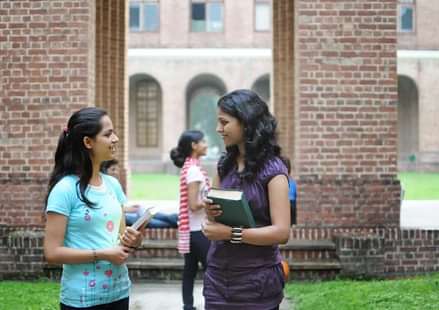
Going by the previous year trends, the CBSE class 12 Economics most important topics for half yearly exam include basic concepts methods of measuring NI (Expenditure, Income, Product), etc for National Income, Deficits: Revenue, Fiscal, Primary, Objectives of the budget for government budget, LPG: Liberalization, Privatization, Globalization, Impact on different sectors from Economic Reforms since 1991, Need for sustainability, Strategies to manage environmental degradation from Environment and Sustainable Development, etc. Throughout this article, we will be discussing the CBSE Class 12 Economics Half Yearly Exam 2025 Most Important Topics and Questions.
Note that the questions given in this article have been mentioned based on the previous year's trends. Keep reading to know more about CBSE Class 12 Economics half yearly exam 2025 most important topics and questions.
CBSE Class 12 Economics Half Yearly Exam 2025 Most Important Topics
In the table below, we have mentioned the important topics of the CBSE class 12 Economics half yearly exam:-
Macro Economics:
Name of the chapters | Important topics |
|---|---|
National Income |
|
Money and Banking |
|
Determination of Income & Employment | Aggregate demand & supply Consumption & investment functions Equilibrium level of income Multiplier |
Government Budget |
|
Balance of Payments |
|
Inflation (Integrated in other units) |
|
National Economy:
Name of the chapters | Important topics |
|---|---|
Indian Economy (1947–1990) |
|
Economic Reforms since 1991 |
|
Poverty |
|
Human Capital Formation |
|
Rural Development |
|
Employment |
|
Infrastructure |
|
Environment and Sustainable Development |
|
Comparative Study |
|
CBSE Class 12 Economics Half Yearly Exam 2025 Most Important Questions
Go through the topics below to get a good idea about the most important questions of CBSE class 12 Economics half yearly exam:-
Q1. What is macroeconomics?
Q2. Define & explain the methods of measuring National Income.
Q3. Distinguish between Nominal GDP vs Real GDP.
Q4. What is the Consumption Function? Explain the concept of Marginal Propensity to Consume (MPC) with examples.
Q5. What is government budget? Differentiate between fiscal deficit, revenue deficit and primary deficit.
Q6. Instruments used by RBI / central bank for monetary policy.
Q7. Balance of Payments – its components & how it is affected by foreign exchange rate changes
Q8. Explain the determination of income and employment in Keynesian theory.
Q9. Tools for controlling inflation / deflation in an economy.
Q10. Features of Indian economy on the eve of independence.
Q11. What is Liberalisation, Privatisation & Globalisation (LPG)? Its effects on Indian economy.
Q12. Causes & effects of poverty in India.
Q13. Role of human capital formation in India’s growth.
Q14. Rural development: problems & government initiatives.
Q15. Infrastructure: its importance & current challenges in India.
Q16. Environmental issues and sustainable development in India.
Q17. Comparative development experiences of India and its neighbours (e.g., China, Pakistan, Bangladesh).
Q18. Explain the meaning of Aggregate Demand and its components.
Q19. What is Aggregate Supply? How does short‑run AS differ from long‑run AS?
Q20. Describe the Circular Flow of Income in a two‑sector economy.
Q21. Explain the concept of Multiplier. Derive its formula.
Q22. What is Marginal Propensity to Consume (MPC)? How is it related to the Multiplier?
Q23. Define Autonomous Consumption and explain its importance.
Q24. How do changes in investment affect national income? Use the investment multiplier concept.
Q25. What do you understand by Inflation? Discuss its types and causes.
Q26. What is Deflation? How is it different from disinflation?
Q27. Role of government budget in stabilising the economy.
Q28. Explain what is meant by Fiscal Policy. Give two instruments of fiscal policy.
Q29. What is Monetary Policy? Describe two ways in which RBI uses monetary policy to control inflation.
Q30. Define Balance of Payments. What are its major components?
Q31. How does the depreciation/appreciation of a country’s currency affect its trade?
Q32. Concept of Full Employment vs Underemployment.
Q33. Explain how the banking system creates credit or money.
Q34. What are Open Market Operations? How do they affect the money supply?
Q35. Define Savings and Investment in an economy. How are they related in the macro model?
Q36. What is Gross Domestic Product (GDP) vs Net Domestic Product (NDP)?
Q37. Distinguish between Nominal GDP and Real GDP.
Q38. Describe the features of the Indian agriculture sector.
Q39. Explore the role of Green Revolution in Indian agriculture.
Q40. What are the major issues of rural poverty in India?
Q41. How has liberalisation affected Indian industries?
Q42. Discuss the role of small and medium enterprises (SMEs) in India.
Q43. What are the main challenges in Indian infrastructure?
Q44. Role of Foreign Direct Investment (FDI) in India’s development.
Q45. Explain the importance of human capital formation in India.
Q46. What are the causes & effects of unemployment in India?
Q47. Explain the measures taken by the government to control inflation in India.
Q48. Discuss the significance of sustainable development in Indian context.
Q49. What is inclusive growth? How is it relevant for India?
Q50. Explain the role of public sector undertakings (PSUs) in India’s economy.
Q51. Explain Say’s Law of Markets.
Q52. What is the Paradox of Thrift?
Q53. How does the investment function differ from the consumption function?
Q54. What are leakages in the circular flow of income?
Q55. Explain the accelerator principle.
Q56. Derive the relationship between MPC, MPS, and APS.
Q57. What is a full employment equilibrium?
Q58. How can the government use direct taxes to reduce inequality?
Q59. What are automatic stabilisers in fiscal policy?
Q60. Explain the concept of stagflation.
Q61. What is the crowding-out effect?
Q62. How does the interest rate affect investment demand?
Q63. Explain the working of the fiscal multiplier.
Q64. What is quantitative easing?
Q65. How are imports and exports affected by domestic inflation?
Q66. What is meant by ‘monetary transmission mechanism’?
Q67. Explain the difference between the budget deficit and the fiscal deficit.
Q68. What is seigniorage?
Q69. How is the foreign exchange rate determined in a floating exchange rate system?
Q70. Explain the effects of depreciation vs appreciation of currency on aggregate demand.
Q71. State and explain the causes of low productivity in Indian agriculture.
Q72. Discuss the role of cooperatives in rural credit in India.
Q73. What are the recent government initiatives to improve healthcare in India?
Q74. Analyse the effects of demonetization on the Indian economy.
Q75. What steps has India taken for poverty alleviation? Evaluate their success.
The CBSE class 12 Economics half yearly exam plays a crucial role in helping you prepare for the final exam. By focusing on these topics and questions, you can hone your revision and conceptual clarity. Remember, Economics is not just about memorising definitions or formulas; it is about understanding how real-world events connect with theoretical models. We recommend solving these questions consistently, revisiting your NCERT textbook, and analysing previous years’ trends to boost your confidence and accuracy. A balanced approach, combining regular practice, smart revision, and conceptual clarity, will definitely help you perform well in your half yearly exam and beyond.
Are you feeling lost and unsure about what career path to take after completing 12th standard?
Say goodbye to confusion and hello to a bright future!

Was this article helpful?





















Similar Articles
27th WB SET EWS Category Expected Cutoff 2025 for All Subjects
27th WB SET OBC-B Category Expected Cutoff 2025 for All Subjects
27th WB SET Political Science Cutoff 2025: Check expected cutoff, previous years' cutoff trends
27th WB SET OBC-A Category Expected Cutoff 2025 for All Subjects
27th WB SET History Cutoff 2025: Check expected cutoff, previous years' cutoff trends
27th WB SET ST Category Expected Cutoff 2025 for All Subjects